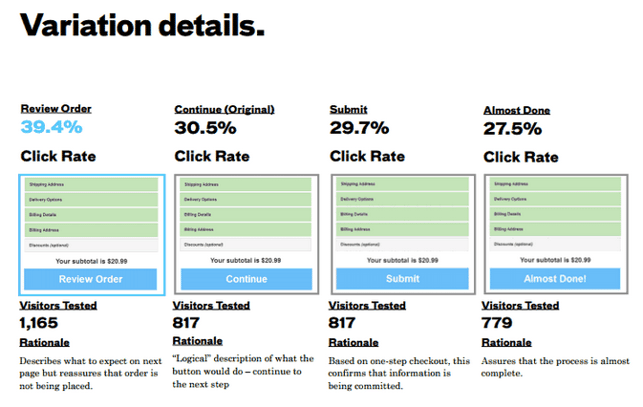HubShots Episode 157: 3 Big Mistakes we see Clients make in their HubSpot portals
Welcome to Episode 157 of HubShots! Welcome to HubShots, APAC's number 1 HubSpot focussed podcast, where we discuss HubSpot tips and tricks, new...
If you're new to HubSpot, we guide you on where to start, how to do it right, and train you to make the most of the platform.
Review your HubSpot portal to uncover issues, spot growth opportunities, and ensure you're maximising its potential.
Unlock business growth with automation and attribution. Implement best practices and execute marketing campaigns.
HubSpot On-Demand
HubSpot Training
HubSpot Websites
HubSpot Campaigns
HubSpot Optimisation
9 min read
![]() Solar Trust Centre Team
28 July 2014 11:36:25 AM
Solar Trust Centre Team
28 July 2014 11:36:25 AM
Most newbies in online businesses will make some mistakes. However, time should always be set aside to remedy these blunders. If you’ve been in the industry for some time and still have no idea that you’re doing things the wrong way, you may be causing some marketing disasters for your business.
While not all marketing strategies will suit your business, there’s no harm in trying industry tested approaches. As Mike Volpe, Chief Marketing Officer of Hubspot said, “Don’t be afraid to get creative and experiment with your marketing.” Get creative but do it right.
Here’s some mistakes you may be committing that are affecting your profit, plus a couple of tips to help remedy some of these slip-ups.
You might be spreading your influence too thinly across social media. There are various ways to use social media platforms, each of which has their own strengths. Chris Brogan, Founder of New Marketing Labs, said to start first with a blog. Then begin to understand the individual qualities and functions of each social media network so that you use them correctly.
Facebook is a visual social network where your introductory words should be short but just as powerful as the featured image shown. Twitter on the other hand builds a brand personality while LinkedIn is good for B2B marketing. Instagram is new in marketing but is visually powerful, as is Pinterest.
Visit this article from the hub for an in-depth guide on how to market your brand on famous social media platforms.
This could be a major turn off and it’s the obvious reason why lead nurturing needs to happen before selling. In a study conducted by Gleanster, it was found that 30 to 50% of leads will purchase your products in the future rather than in the first few moments they accessed your website and content.
Hard selling usually intimidates and it can scare customers away. Nurture now, and reap the benefits later. Marketo pointed out the 4-1-1 rule on how to engage and nurture readers, read it here.
Example: when you order in a restaurant, you would want your food to arrive in the shortest time possible. IF you're patient you might wait, if you’re not you’ll find another place to eat; there are always other restaurants in the area.
Now, what has this got to do with online marketing? Slow servers on the internet are akin to slow service in the real world. The speed or load time of your website may affect sales, your business may lose roughly 25% of your visitors if your load time exceeds 25%. Kissmetrics pointed out 15 other factors related to slow load time, including web host choice, unupdated and limited capability CMS and DNS lookups.
Email marketing is still one of the best strategies there is in the industry. Make sure you get permission before adding anyone to your email list. Building an email list is akin to building your company’s value.
 In this infographic from PrestigeMarketing, poor content is said to impact business greatly.
In this infographic from PrestigeMarketing, poor content is said to impact business greatly.
Milton Hershey, the beloved chocolate brand founder, quipped “Give them quality. That’s the best kind of advertising”. Though Hershey referred to his chocolates, it aptly applies to content and online marketing.
Businesses shouldn’t be content with mediocrity when clients are searching for the best. Today, 90% of B2C marketers use content marketing and 73% of marketers said that content increases brand awareness. This awareness should be properly implanted in the consumers consciousness. Businesses shouldn't publish half baked content because, first, readers can detect quality (poor content, less engagement) second, it mirrors your brand (cheap and disorganized content may then be perceived as a cheap product) and third, it offers no help (readers seek content that will help them solve their problem).
To remedy this, hire a good content provider.
 Tracking results can make a difference. photo: Blue Fountain Media
Tracking results can make a difference. photo: Blue Fountain Media
It’s one thing to know that your sales are up but it’s another thing to know which online strategy actually worked for you and which should be stopped or given less attention. Tracking results isn’t a one sided activity that only gives information on your marketing results, it should also be collecting in depth data of your own marketing strategy.
In a content research report “A Crisis of Confidence: The State of Content Marketing Measurement”, it has been found that marketers use only page views or unique visitor numbers to measure their content success which leaves a lot of information unseen; time on site should be taken into consideration. The same study also found that 7% of marketers do not measure their content success in any other way.
Monte Enbysk of Microsoft pointed out five reasons why you should track traffic:
Marketing to a demographic can get you a decent number of likes and shares, but marketing to a niche can give you better results than “decent”. What’s the difference?
On Facebook, before you can boost your post, you need to choose your target audience. For example, you want your post to reach the 24-45 year old audience, those who are residing in Australia, America and the UK. The age bracket and the location of audiences doesn’t define a niche, it’s a demographic. Demographic includes students, parents and business owners.
A niche is an in depth categorization of these demographics. They are more specific and these niche groups more often than not share a common problem. You don’t just try to sell to all within the 24-40 year old demographic but instead to 24-40 year olds who want to solve a specific problem that your product/content offers.
In Herman Simon’s book, Hidden Champions, he pointed out many companies which are less visible to the public but are highly profitable since they pursue well defined niches in their business. It includes the company Steiner Optical; they produce 80% of the world’s military field glasses; Tetra food which makes 80% of the worlds fish food for tropical fish; Becher that makes 50% of the worlds oversized umbrellas. Now imagine 50% to 80% of the world being in your market just because you learned the difference between demographics and niche.
 ROI can be the measuring end of every business' venture. photo: Kyrre Gjerstad via flickr
ROI can be the measuring end of every business' venture. photo: Kyrre Gjerstad via flickr
In every marketing strategy change or overhaul, there will be different ROI levels. Check and record this and learn from it in implementing future campaigns. Make sure you understand the positive and negative effects of the change you made.
One cannot rely solely on SEO and expect to sell. Although SEO is an integral part of every web and digital marketing strategy, it can’t work on its own. Online marketing is complex as is human behavior and both change over time.
Other strategies which should be in your bucket list as a business owner and as a marketer should include:
Some basic examples of lack of focus in regards to marketing is in the use of social media channels and business owners being inconsistent when called to action. Another is brand projection.
Lack of focus can kill your business; you can’t just try to throw in various strategies for marketing in the hope that some of them will be effective. However, what does work is pinpointing the most rewarding opportunities and strategies and apply them correctly. The first way to start your focused strategy is to look at your own content or products. Your more successful content will tell you whatis going to work. OR take a hint form your competitors and other companies; see what they are doing, what is popular right now?
Focus or get lost is always taught in marketing 101.
Remember when vines started going viral? Maybe it's time you started giving some attention to Youtube as another marketing platform.
 According to a study, 81% of sales may only happen right or after the 5th contact with consumers. photo: Waag Society via flickr
According to a study, 81% of sales may only happen right or after the 5th contact with consumers. photo: Waag Society via flickr
We mentioned earlier not to hard sell at the first meeting. Keep it cool. Only once you have established the connection should you start selling. This is were follow up marketing happens. In a study conducted by Association of Sales Executives, 81% of sales happen at around the 5th (or even later) contact with the consumers. Snobbing a reluctant customer early on may result in profit loss.
90% of marketers usually don’t do follow ups. However, high conversion rates happen later. There are three categories of your audience that need follow up, they are:
Plan B is the back up when all else fails. Or it can be a reshuffling of Plan A’s strategy only with varied intensity or depth to achieve the desired result.
Examples of A/B testing include subtle changes in homepages images, little tweaks in format or shortening certain posts. In Insounds A/B experiment, they set up four alternative checkout buttons to know which performed best in click rates. Here is the result:
 Image courtesy of
Optimizely
Image courtesy of
Optimizely
Obviously, “review order” fostered better trust among clients and has improved click through rates.
There are different kinds of strategies that work with different kinds of people. When your business has a worldwide scope, chances are there’ll be a lot more to tackle. A market in Australia can be different in China as well as in the US. This problem is a double edged sword. No matter how diverse the culture of marketing is, you just need to deliver.
Take eBay for example; why is it that it can’t match TaoBao in China? Because it fails to deliver what the culture is banking on. Another example is the Blackberry; after dominating its market in the past, it has now fallen into a downward spiral. To compete with iPhone and Android, they released a touch screen smartphone which failed to deliver, leaving Blackberry's old glory to crumble.
It's one thing to fail to deliver but it’s another thing to misdirect or mislead consumers. One great example of this involved email and has cost one social media company $9.5 million in settlement. Classmate.com’s demise started after it sent a client an email informing him of old classmates trying to contact him through the site. In order to see it, one has to upgrade to a premium account. But after the upgrade clients found that there was no such promise.
Aside from lawsuits, one major thing that can happen to your company is losing face in front of your customers and eventually losing them as an audience. Lesson? Never under-deliver.
 An example of an interesting photo done in stockphoto quality but is available in Flickr for free.
An example of an interesting photo done in stockphoto quality but is available in Flickr for free.
Most people are visual learners and photos are worth a thousand words, if not a thousand dollar profit. Poor photos mirror your taste. Good photos can entice click throughs. Recently, twitter added inline image to tweets as a feature. This gave blufferapp 18% more clicks, 89% more favorites and 150% more retweets.
For Facebook and images, HubSpot conducted an experiment. It concluded that posts with eye-catching images may get 53% more likes than the average post. This also attracts 104% more comments compared to non-imaged posts.
In newsletters and other campaigns, Vero noted a 42% higher click through rate compared to campaigns without images. To draw in clients, make your photos:
Ignoring competitors doesn’t earn you a point ahead of them. Sometimes they may give you insights which are helpful and sometimes they may make mistakes which you will know not to repeat.
This doesn't happen as often as it used to in the marketing world, but it’s worth a mention. Don’t rely solely on blogger.com and wordpress.com. Get some paid hosting instead and build your website.
Cheap content is equal to poor content and this also goes for website design. Cheap website designers will also deliver poor website quality or functionality.
Plus, you can’t rely on organic click through alone; you need paid ads. Remember, it's all about investments.
A landing page is like your website's living room where you accept your visitors. Now, wouldn’t you give your visitors the best accommodation? Landing pages can make or break your intended sale. Irrelevant landing pages can lose you customers.
Landing pages can be in any form you want. They can be used to acquire new subscribers, or used to pitch your new product or get a Facebook like.
 Social media is vital in online marketing, but the way you handle it holds even more utmost importance. photo: Jason Howie via flickr
Social media is vital in online marketing, but the way you handle it holds even more utmost importance. photo: Jason Howie via flickr
Your social media fans are human, therefore they need humans answering them as much as is possible. Automating your social media interactions may result in cold and robotic interaction which customers don't care for. Remember that engagement stems partly from the use of emotion. So, never cancel out the act of replying to your clients as a part of your strategy.
Marketing can be automated but responses shouldn’t be.
Why not make use of your own domain name?
All xen employees carry an email address with a tailend of @xen.com.au. So between roelen_xen@gmail.com and roelen@xen.com.au, the latter seems more credible and reliable. So yes, clients tend to trust personalized and domain based email addresses compared to those that aren’t.
Negative keywords are important in paid marketing campaigns. It may take time but it can increase your website’s performance. So, how do you make use of this?
Everybody loves deals, even the most clever consumers who can spot hidden marketing maneuvers. Discounts can prod even the most reluctant buyers. This is due to the fact that humans are always looking for something they can gain, even if they do not really need a specific product for the moment.
Whilst discounting can undermine you if you run a consulting business or offer premium products, for other businesses (eg online stores) it can provide a welcome boost in interest. If you run an ecommerce site, test giving occasional targeted discounts to time to draw in customers.
Traffic isn’t your result. Traffic is exposure but it isn’t a sure number of your converted profit. Dig deeper, know which segments within the traffic have the highest purchase rate.
 Billion dollar businesses would have failed without passion from the people behind it. photo:Eneas via flickr
Billion dollar businesses would have failed without passion from the people behind it. photo:Eneas via flickr
Passion drives everything and this attitude can be projected within your products, services and campaigns.
Welcome to Episode 157 of HubShots! Welcome to HubShots, APAC's number 1 HubSpot focussed podcast, where we discuss HubSpot tips and tricks, new...
New businesses, particularly small ones, are fully aware of how important social media can be. So why do so many of them make such simple and...
Welcome to Episode 162 of HubShots! Welcome to HubShots - APAC's number 1 HubSpot focussed podcast - where we discuss HubSpot tips & tricks, new...